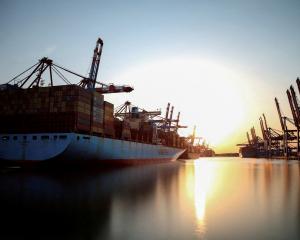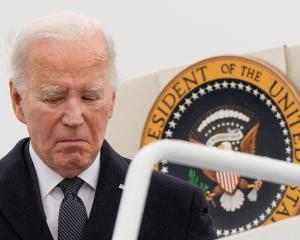The picture of the two Asian giants that most people carry around in their heads shows China racing ahead economically while India bumbles along, falling ever further behind.
People even talk about the 21st century as ''China's Century'', just as they called the 20th century the American Century.
But it may turn out to be only China's Quarter-Century.
The headline economic news this year is that India's economy is growing faster than China's.
Not much faster yet, according to the official figures - a 7.5% annual rate for India against 7.4% for China - but there is good reason to suspect the real Chinese growth rate is considerably lower than that.
Anybody who goes to both countries can see India has a huge amount of catching up to do.
The contrast in infrastructure is especially striking: China has 100,000km of expressways (freeways, motorways); India has only 1000km.
But the differences in income and productivity are also very big: gross domestic product per capita in China is between three and five times higher than in India, depending on how you calculate it.
But that is a snapshot of now.
It was very different 35 years ago, when per capita income in India was still higher than it was in China.
It was then-leader Deng Xiaoping's decision in 1978 to open up the Chinese economy that unleashed the spectacular economic growth rates of the recent past, and an economy growing at 10% a year doubles in size every seven years.
That means (allowing for a little slippage) that the Chinese economy has grown more than 20-fold since 1978.
That is why it is so far ahead now.
India's growth rate was a quite respectable 3% or 4% for most of that period, but that gave the Indian economy a doubling time of around 20 years, so it has only grown around threefold during the whole period. India is not chronically poorer than China.
It just missed that particular bus.
The next bus has now arrived: India actually could catch up with China if its economic growth rate is now really surging ahead of China's.
There is good reason to believe that it is, because China's declared growth rate for this year is pure fiction.
China avoided the global recession after the 2008 crash by opening the credit taps to full and embarking on the largest spending spree on infrastructure (roads, housing, railways and airports) the world has ever seen. But capitalist economies cannot avoid recessions forever.
The country is now full of empty apartment buildings, the private debt load has doubled in five years - and the recession is coming.
More than that, China's period of high-speed growth was probably always going to be limited.
Japan enjoyed a quarter-century of 10% annual growth in 1955-80 and became, for a while, the world's second-biggest economy.
But once its per capita income reached developed-world levels, the growth rate dropped down to developed-world levels too: between 2% and 4%. (Now it's almost nothing.)
In fact, all the East Asian economies (except North Korea, of course) have followed the same pattern: a lengthy burst of ultra-high-speed growth, followed by a fall to the developed-state norm once a certain level of prosperity has been achieved.
South Korea and Taiwan both did it - and then subsided to a growth rate not very different from that of the United States.
China has also had its quarter-century of 10% growth, and it is probably over.
The official figure for economic growth last year was still more than 7%, but the less easily manipulated numbers for rail freight, electricity production and bank lending suggest the real growth rate was only around 3%.
That is to say, less than half of India's.
The other thing that will hold China back in future is a steady fall in the population of working age.
India's birth rate is still 2.7 children per woman (though it is falling fast).
China's is at most 1.7, and the one-child policy means it may even be lower than that.
So fewer and fewer young Chinese are entering the workforce, whereas there will be no shortage of young Indians.
India's total population will overtake China's in less than five years (they are both around 1.3 billion), and after that the gap will steadily widen.
While China's population shrinks and its economic growth slows, India is only now entering the golden quarter-century of high-speed economic growth.
In 25 years' time, India may be back in the position it occupied for most of the past two thousand years: the biggest economy in Asia.
• Gwynne Dyer is an independent London journalist.












